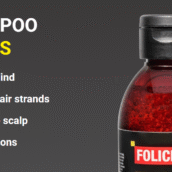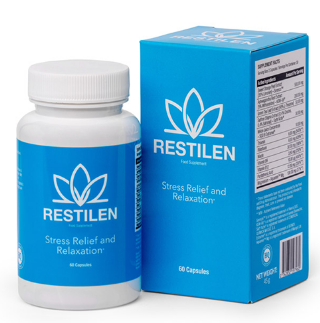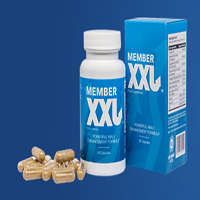Peptides for Hair Growth: The Science Behind Thicker, Fuller Hair

Hair loss and thinning affect millions worldwide, driving a relentless search for effective solutions. Among the latest breakthroughs in hair restoration science are peptides—small but mighty chains of amino acids that promise to revolutionize hair care. But do they really work?

In this comprehensive guide, we’ll explore:
- What peptides are and how they stimulate hair growth
- The most effective peptides for hair regrowth (backed by science)
- How peptides compare to traditional treatments like minoxidil
- Topical vs. oral vs. injectable peptide therapies
- Real-world results: How long before you see improvements?
- Potential side effects and safety considerations
What Are Peptides and How Do They Work for Hair Growth?
Peptides are short chains of 2–50 amino acids, the building blocks of proteins like keratin and collagen—key components of hair structure. Unlike full-length proteins, peptides are small enough to penetrate the scalp and signal cellular processes that promote hair health.
Key Mechanisms of Peptides for Hair Growth
- Stimulating Follicle Activity
- Peptides like GHK-Cu (Copper Peptides) and Acetyl Tetrapeptide-3 extend the anagen (growth) phase of hair follicles, delaying shedding.
- They activate dermal papilla cells, which regulate hair cycling and thickness.
- Boosting Blood Circulation
- Peptides enhance nitric oxide production, improving scalp blood flow to deliver more oxygen and nutrients to follicles.
- Blocking DHT (A Leading Cause of Hair Loss)
- Some peptides, like Biotinoyl Tripeptide-1, inhibit 5-alpha-reductase, the enzyme that converts testosterone into DHT—a hormone linked to androgenetic alopecia .
- Reducing Inflammation
- Chronic scalp inflammation can damage follicles. Peptides like GHK-Cu have anti-inflammatory effects, creating a healthier environment for hair growth.
- Strengthening Hair Structure
- Collagen peptides provide amino acids that fortify keratin, reducing breakage and improving elasticity.
Top 5 Peptides for Hair Growth (Clinically Proven)
1. Copper Peptides (GHK-Cu)
- How it works: Stimulates collagen, increases blood flow, and extends the anagen phase.
- Clinical proof: A study showed a 27% increase in hair density after 6 months of use 2.
- Best for: Androgenetic alopecia and age-related thinning.
2. Acetyl Tetrapeptide-3
- How it works: Strengthens the extracellular matrix around follicles, reducing shedding.
- Clinical proof: Users saw a 17% increase in hair diameter and 67% boost in growth activity.
3. Biotinoyl Tripeptide-1
- How it works: Enhances keratin production and anchors hair roots more firmly.
- Clinical proof: Reduced hair loss by 58% and increased density by 35%.
4. Fish Collagen Peptides
- How it works: Orally ingested collagen peptides promote follicle proliferation.
- Clinical proof: In mice, fish collagen regrew hair as effectively as finasteride.
5. APN5 Peptide (A Minoxidil Alternative?)
- How it works: Mimics minoxidil’s effects but with fewer side effects.
- Early research: Shows promise in awakening dormant follicles.
Peptides vs. Minoxidil: Which Is Better?
| Factor | Peptides | Minoxidil |
| Mechanism | Stimulates growth factors, blocks DHT | Vasodilator (boosts blood flow) |
| Side Effects | Mild (scalp irritation possible) | Dryness, itching, heart effects |
| Results Timeline | 3–6 months | 4–6 months |
| Long-Term Use | Safe for extended use | May lose efficacy over time |
Expert Take:
“Copper peptides promote hair growth with fewer side effects than minoxidil. They’re especially beneficial for those with sensitive scalps.” — Dr. Kiran Mian, Dermatologist.
How to Use Peptides for Maximum Hair Growth
1. Topical Serums (Best for Daily Use)
- Application: Apply peptide-infused serums (e.g., GHK-Cu) directly to the scalp and massage.
- Frequency: Daily or 2–3x/week for intensive formulas.
2. Oral Supplements (For Scalp + Strand Health)
- Collagen peptides (10g/day) improve hair thickness and reduce breakage.
3. Injectable Peptides (For Advanced Hair Loss)
- PRP + Peptides: Combining GHK-Cu injections with PRP enhances follicle regeneration.
4. Microneedling + Peptides (Boosts Absorption)
- Microneedling creates microchannels for deeper peptide penetration.
When Will You See Results?
- 4–8 weeks: Early changes (visible under magnification).
- 3 months: Noticeable thickening and reduced shedding.
- 6 months: Full results (30%+ density improvement in studies).
Potential Side Effects & Safety
- Topical peptides: Rare irritation or redness (patch test first).
- Oral collagen peptides: Generally safe, but avoid if allergic to fish/shellfish.
- Injectable peptides: Risk of swelling/bruising (seek a licensed provider).
The Future of Peptide Hair Therapy
Emerging research includes:
- PP405 (UCLA’s follicle-reviving molecule) – Awakens dormant stem cells 7.
- 2dDR (A sugar-based peptide alternative) – Promotes angiogenesis for hair growth.
Final Takeaways
- Peptides stimulate follicles, block DHT, and reduce inflammation for healthier hair.
- Copper peptides and collagen peptides have the strongest clinical backing.
- For best results, combine peptides with microneedling or PRP.
- Consistency is key—expect visible improvements within 3–6 months.

Recent Posts
- 5 Silent Signs of High Blood Pressure You Shouldn’t Ignore in 2025
- 5 Everyday Foods That Naturally Detox Your Liver (Backed by Science in 2025)
- Preventive Eye Care: 5 Essential Habits to Protect Your Vision in 2025
- The Sleep-Weight Connection: Fixing Insomnia to Lose Belly Fat
- The 30-Day Protein Reset: How to Use High-Protein Meals to Curb Cravings
















